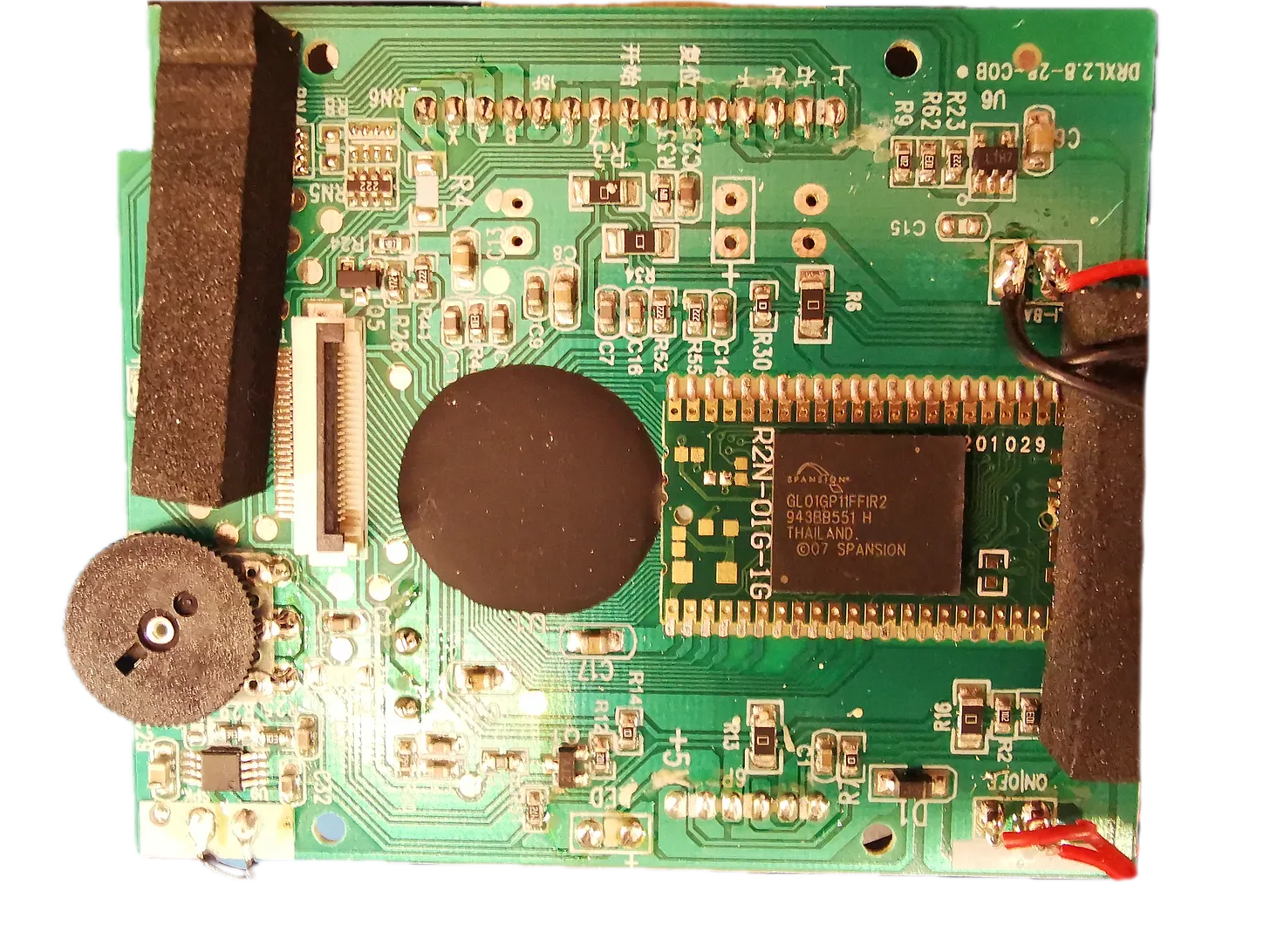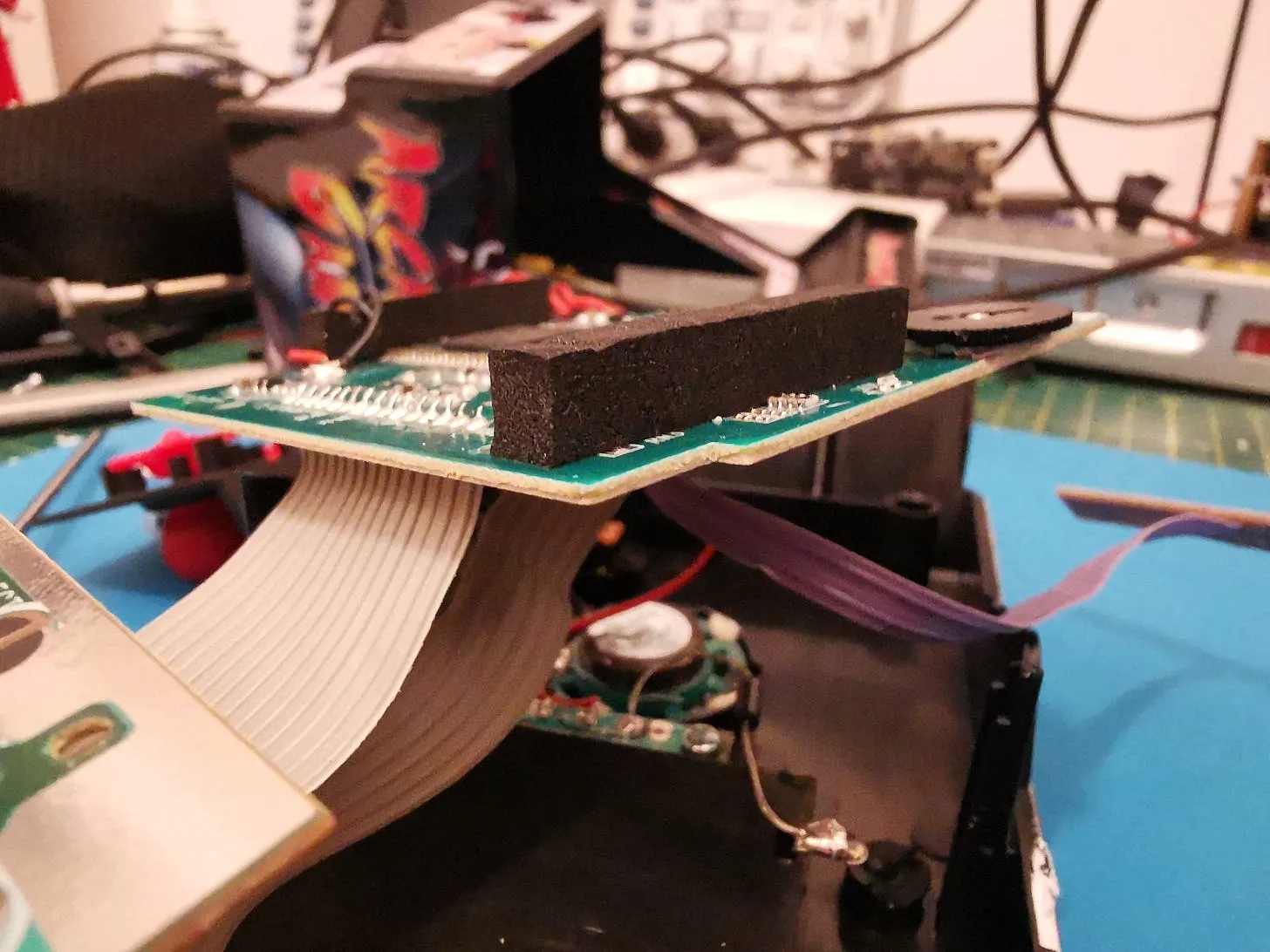What’s inside a 16 bit mini handheld video arcade?
Surprisingly little it turns out! I was hoping for something slightly more hackable, but pretty much everything is done by a blob chip on the PCB.

The big IC is just flash storage for all the games (156 of them!).
What is interesting is that they have managed to get all of this onto a single sided board! That’s pretty impressive work - though it is probably helped by having the flash on a little daughter board that has multiple layers and lets the route the signals in a way that simplifies the main board.

It’s still a pretty interesting tear down - always good to see what’s inside these things.
This is the [one I bought]](https://s.click.aliexpress.com/e/_DdqEcfL) - shop around as there seems to be a lot of options!